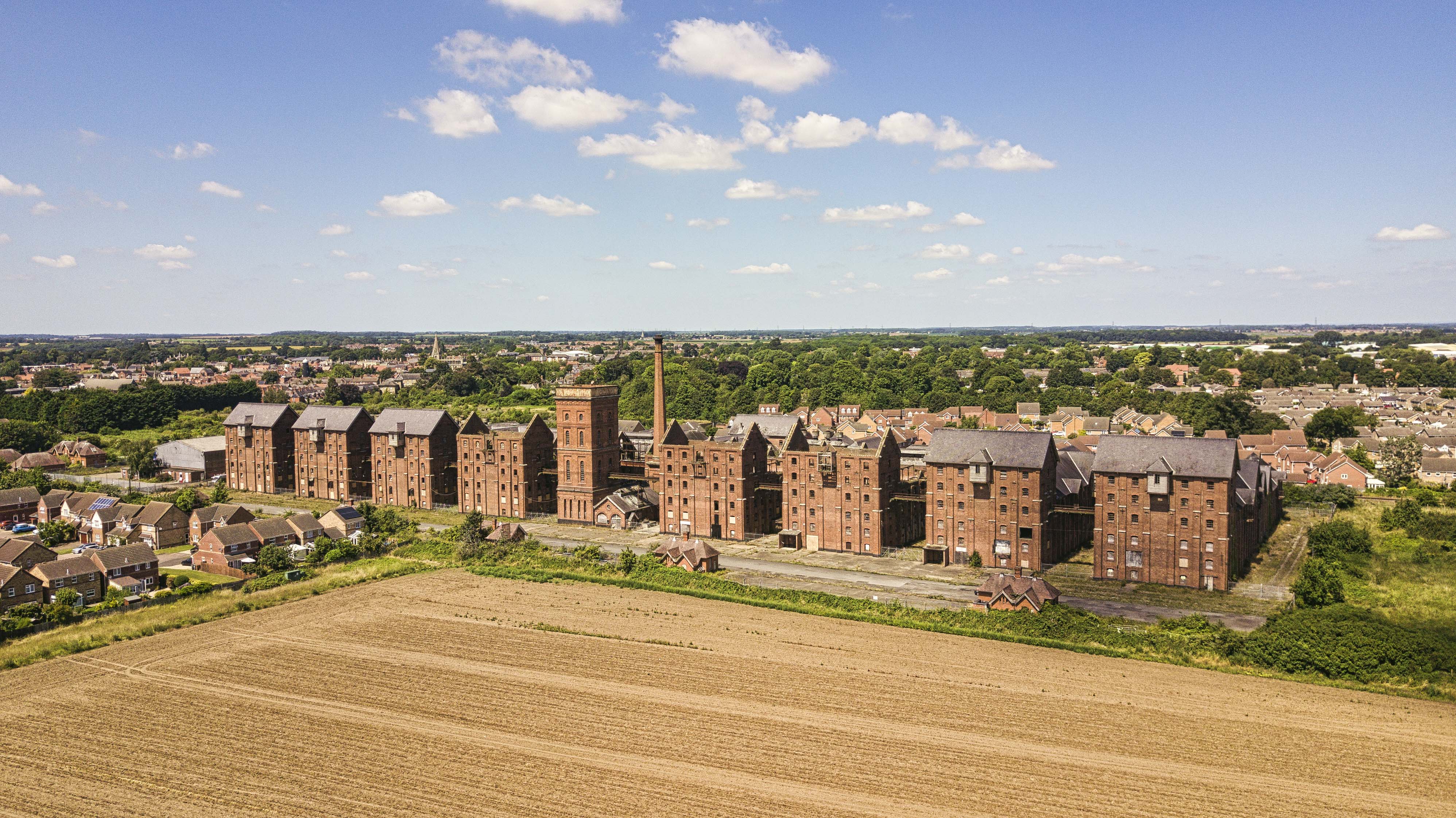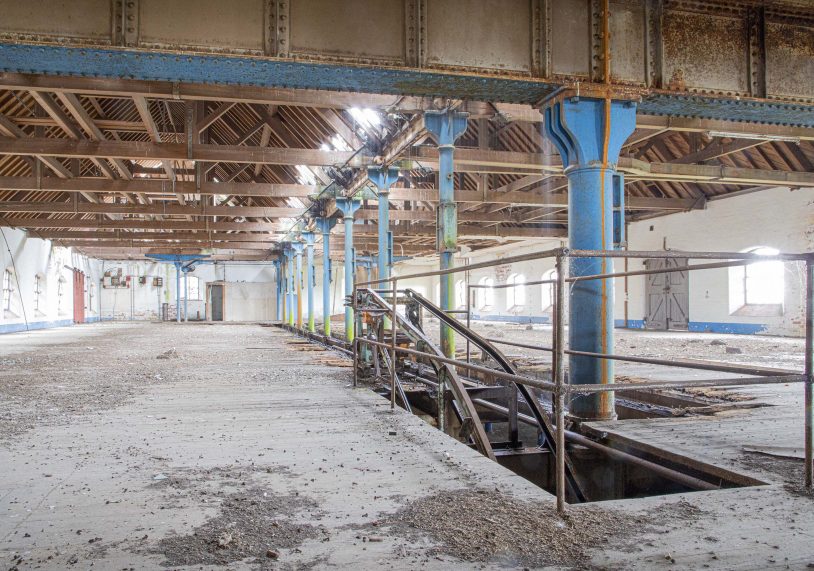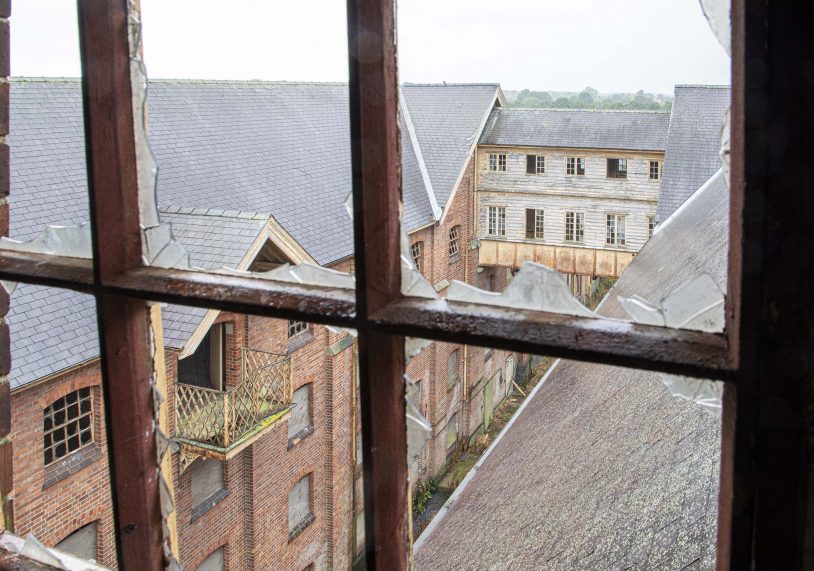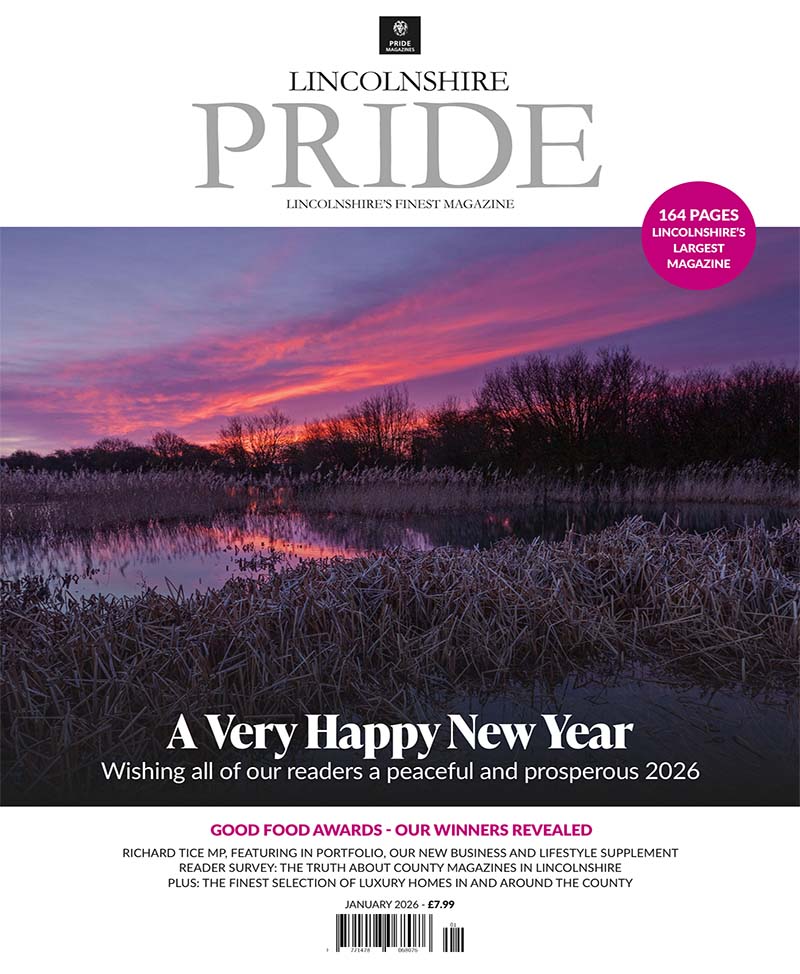
All about the Bass
2021 represents the 120th anniversary of Sleaford’s Bass Maltings site, and in recognition of its heritage and in hope of the site’s future development, Sleaford Museum is this month providing an opportunity to get to know the site better. We spoke to historian and researcher of the museum’s new exhibition, Nigel Ogden, to find out more…

Some Landmarks are so ubiquitous on our landscapes that they’re almost taken for granted. Naturally some of the big names in Lincolnshire when we look towards the horizon are the Castle and Cathedral, the Humber Bridge, Boston Stump, Tattershall Castle and stately homes like Burghley, Belvoir, Belton and Gunby.
But what about those forgotten landmarks, like Sleaford’s Bass Maltings? For a series of buildings with an industrial purpose at their heart, they’re pretty spectacular not least in their scale, but in the beauty and intricacy of their architecture too.
Right now the site is looking pretty rubbish. Abandoned in 1959, poorly maintained and having fallen victim to vandalism and arson, the buildings have seen better days, but on the 120th anniversary of their construction, Sleaford Museum is determined to celebrate their uniqueness of their design and curate a well-researched, detailed history of the site.
Historian Nigel Ogdan can trace his family’s Sleafordian provenance back about 200 years. After working around the country, he returned to live in the area and began working with the small but perfectly formed Sleaford Museum to research their exhibitions, including their latest one, which will be installed in the museum as Pride goes to press.
“There’s lots of information out there, but more about the history of the buildings,” says Nigel. “The job of a malthouse worker was commonplace at the time of the buildings’ construction and the buildings served a commercial purpose, so perhaps their significance was underestimated at the time… at least by others, but certainly not by Herbert Couchman, the site’s architect.”
The Bass Maltings site incorporated the largest floor maltings in the country at the time by some distance; eight malthouses, with six floors each, 260ft long by 60ft wide, able to hold 56 tonnes of barley… the site had a total capacity of 2,700 tonnes at any one time.
It was one of the last such buildings in his career, so it was probably a bit of a swan song for him and something he took great pride in. Otherwise though, Couchman was meticulous and energetic and versatile, having been involved in the creation of railways, churches and commercial projects including the Bass Maltings, for Bass, Ratcliff & Gretton of Burton upon Trent for whom he was an architect from 1891.
One of the little-known pieces of information that Nigel uncovered during his research was that Couchman’s second wife was actually born in nearby Ruskington, so the project probably inspired a little personal pride in him too.
The company began looking for a site in the 1880s and were interested in Sleaford as there was a natural spring on the site providing water, plus an abundant supply of barley from nearby farms and a good railway link in the town – the town’s railway station was constructed in 1857 – and rail links were much improved at the time.
Work on the Bass Maltings’ construction began in 1901 and lasted until 1907. The site spanned 13 acres and comprised eight malthouses – 16 were originally planned – each with five bays and six storeys. Inside were steeping tanks and germination floors which workers raked over manually.
At the centre of the Maltings was a water tower to the front of the site and two kilns plus two engines to pump water around the site and attached to a series of pulleys for lifting sacks. It’s thought that the water tower had a capacity of 40,000 gallons although beyond that it’s difficult to quantify the total output of the site. Also on the site were workers’ cottages, offices, a storage depot, weighing offices, cart sheds and a canteen.
Tragically, as the site was being completed, Britain was less than 10 years away from the first World War, and production had barely begun when men left to fight abroad, which meant not only a drop in labour but also a drop in demand for the beer that resulted.
The Maltings continued to operate in a post-war era, but only until the 1950s whereupon a new pneumatic malting system had been installed at the brewery’s Burton on Trent site.
This was a mechanised system which did away with the need for workers to manually rake over the malt and was more efficient.
Malting operations were phased out and though the site was let out to other businesses and used as a distribution hub until the 1970s, it was only ever partially occupied from that point on.
G W Padley used the space for chicken rearing and for frozen vegetable processing, in from 1973 until the 1990s but fires in 1969 for which little information is available, then in 1976 and 2014 as a result of arson meant the site would soon fall into a ruinous state.
From 2004 attempts have been made to rescue the site and treat it to a £50m regeneration, but attempts so far have been frustrated and plans remain on hold.
“The building’s history is well-documented but as well as confirming information we already understood to be true, we really wanted to revisit the Bass Maltings in the context of social history,” says Nigel. “We wanted to see it through the prism of human life, and find out about the people who worked there. I’m always curious to find out the human side of a subject, and the appeal of the Bass Maltings from my point of view is the fact that they include information about workers’ lives, about local industry, about architecture, about leaving your home town to go off to war and how deserted the town was, and what it was like when men returned from war. All of those subjects and all of those questions wrap around the buildings themselves.”
Working with Sleaford Museum’s graphic designer Tom Yates and the museum’s display team, Nigel has researched the exhibition which will be on show throughout August and September. In July Nigel and the museum also published a 48-page book detailing the Bass Maltings’ history and hosted a talk at St Denys’ Church introducing the exhibition.
20 years in the planning, 10 years to build and just 52 years in operation, the Bass Maltings is a surviving monument to the area’s industrial heritage, and a stunning architectural site whose beauty, we hope, will one day be shown off once again.
The Bass Maltings in Numbers…
- Construction began in 1901 and lasted until 1906/7, the architect was Herbert A. Couchman.
- Creation of the Maltings cost £350,000 in 1901, the equivalent of £43m today.
- The site covers 13.5 acres, the buildings have a frontage of 1,000ft, and a total area of 50,000sq ft.
- 15 million bricks were used during the Maltings’ construction, plus 2,000 tonnes of sand/gravel.
- The Bass Maltings site comprises eight buildings, each with six storeys and five bays.
- The water tower held 40,000 gallons and stands 100ft tall. Each malthouse is 60ft wide.
- Over 500 workmen were needed to construct the Maltings, 100 staff worked there from 1907.
- The site operated from 1907-1959, but rarely exceeded 50% of its potential operating capacity.
- Each employee was given three pints of Bass beer every day as a sort of employees’ bonus!
- There were eight foremen’s cottages on the site, two larger and six smaller ones.
- Three fires gradually destroyed the Maltings, in 1969, 1976 and 2014.
- The Maltings were given a Grade II listing in 1974. HRH Prince Charles visited the site in 2010.

Sleaford Museum: “We’re Sharing Our Stories…!”
This unique colourful museum is now in its seventh year. Entirely run by volunteers, the display team has worked closely together to present a new exhibition; the story of the Bass Maltings.
“Thanks to our front-of-house support staff and the other eight members of the committee, the museum will be open on Wednesdays and Saturdays throughout autumn. Previous exhibitions of Sleaford’s fascinating history have included displays of the Lee & Green Bottling Factory, Charles Sharpe & Co Seeds, Rauceby Hospital to mention a few, plus numerous smaller cabinet- based exhibitions such as the Picturedrome centenary. Other groups exhibit, for example, archaeological finds and both national and local events are commemorated too, such as the Queen’s Jubilee, the RAF Centenary and Remembrance Sunday. The large picture window always has a stunning display linked to the exhibition’s story inside the museum or it is seasonal such as a Christmas window.”
“We do not charge for entry but welcome any donation or sponsorship of an exhibition. We can provide speakers to liaise with schools, groups and clubs, and memory boxes for residential homes.”
Further information including past exhibitions and contact details are on our website at www.sleafordmuseum.org.uk.






